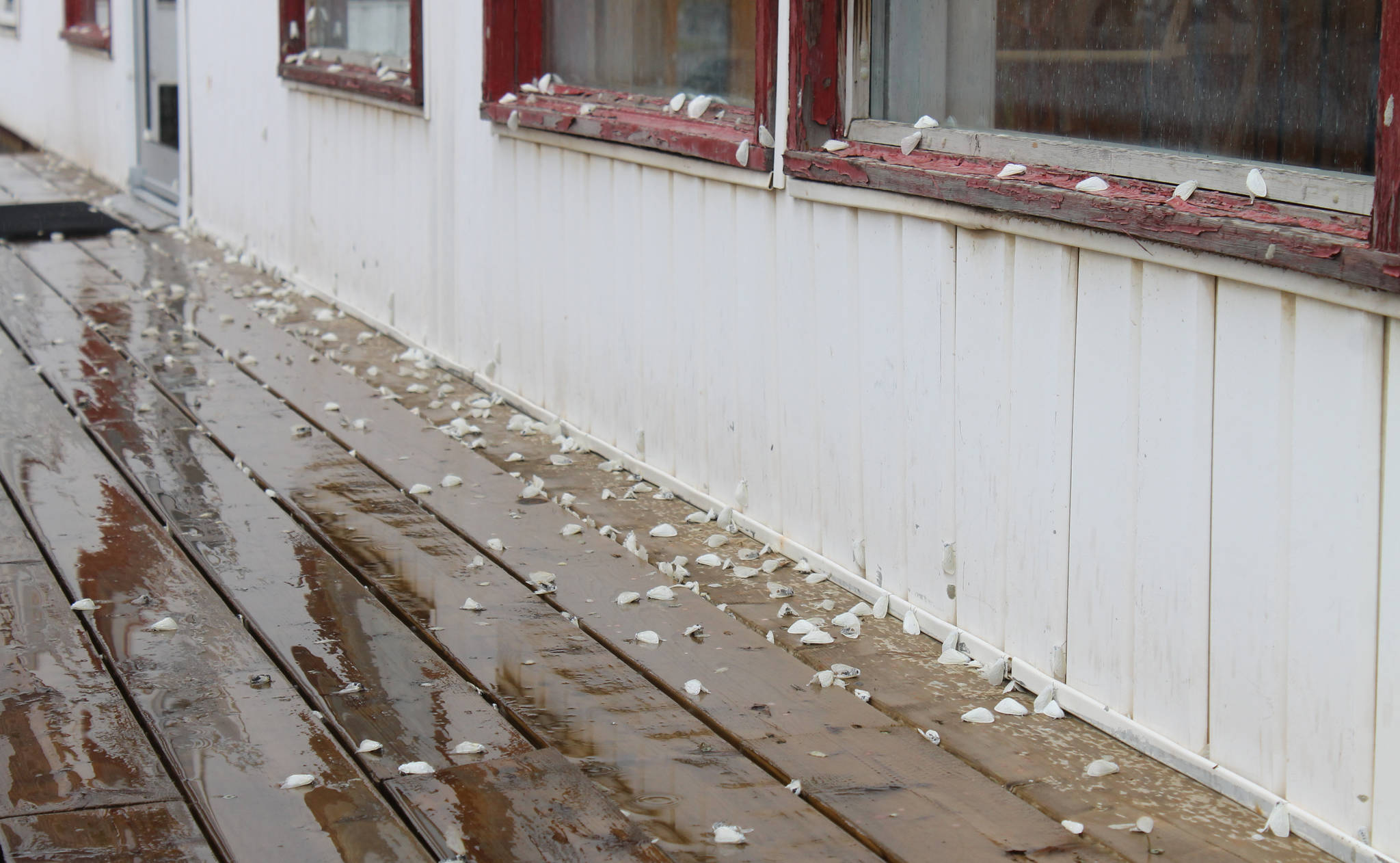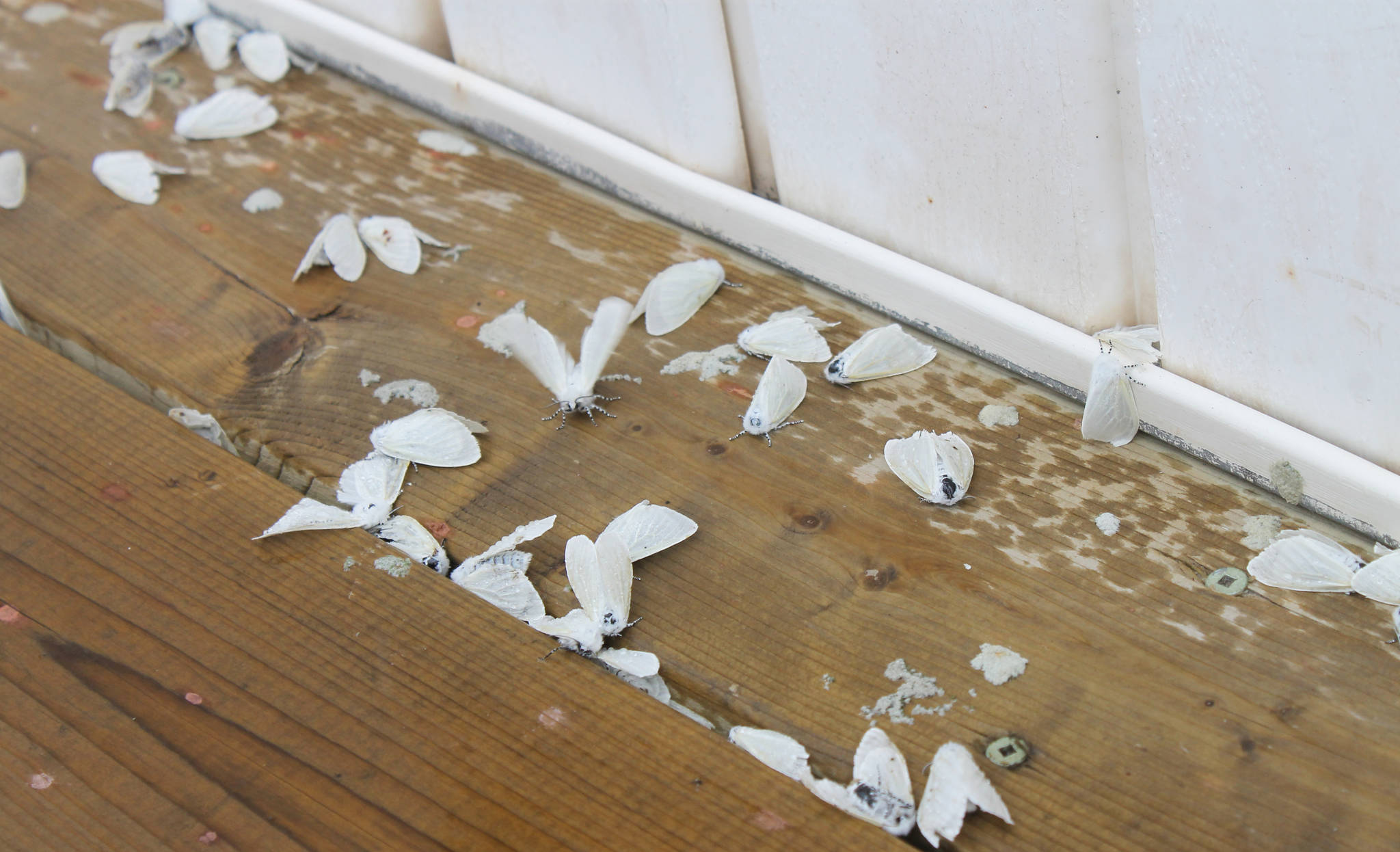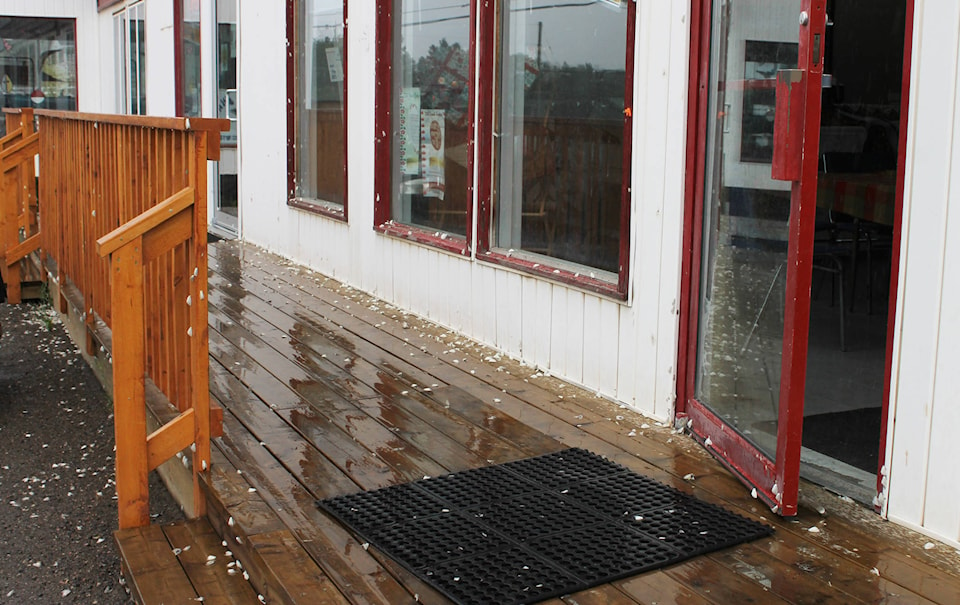In the past few weeks, �������� Lake residents have noticed a significant number of satin moths, as well as a number of defoliated aspen trees. Could them both be connected?
According to Lisa Poirier, an entomologist at the University of Northern British Columbia, there may be a connection between satin moths and the defoliated aspen deaths; however, moths would likely only be one contributing factor.
“Your aspens are likely dying as a result of a combination of factors: defoliation by [satin moths] caterpillars, winter kill, too much or too little water, and even fungal diseases; all could contribute,” she said.
Poirier said the satin moth is not usual for the Lakes District. The insect was introduced into North America from Europe. It was first detected near Boston, Massachusetts, and in British Columbia in 1920.
“It has been extending its range over the years, though, and it is not very surprising to hear that it has reached the Lakes District,” she said. “Prince George had a localized but serious outbreak of satin moths in 2010, and some ornamental poplars sustained quite a bit of damage, including dead branches.”
Satin moths started showing up in larger numbers around Hazelton last year.
These moths are capable of completely defoliating trees. Severe defoliation in several consecutive years results in reduced radial growth of stems, branch mortality, and some tree mortality. However, Poirier said the defoliated aspen may still recover.
“Often, defoliated trees look dead, but will recover quite nicely later in the season or the following year, so don’t write them off too quickly,” she said. “Aspens are reasonably good at tolerating that kind of damage, unless it is quite severe, prolonged, or repeated over several years.”
“If the trees are, in fact, dead, and not just temporarily leafless, it may be that repeated years of defoliation - first by forest tent caterpillar, then by satin moth - along with other factors, have simply been too much for these trees,” she added.
According to Ken White, regional entomologist with the Ministry of Forests, Lands and Natural Resource Operations, while there is some mortality occurring, most trees attacked by the satin moth caterpillar will not die this year.
“While the caterpillars of this moth can completely defoliate trees within a year, it usually takes several years of damage to kill aspen trees,” he said. “Trees that are stressed by other factors - drought, diseases, etc. - may be killed more easily.”
“Our past winter had cold weather combined with little, or no, snow cover,” he added. “This seems to have placed added stress on some aspen stands.”
Ministry regional staff have already received numerous inquiries about satin moths this year. The ministry’s annual forest health aerial overview survey will be conducted later this summer, outlining the areas most heavily impacted by satin moth.
According to Natural Resources Canada, there is no practical way of preventing access of satin moths to trees. To help trees to better withstand defoliation, keep them healthy by watering the roots in the fall before frost sets in, applying a suitable fertilizer each spring, and watering them during prolonged dry periods in the summer.
Outbreaks of satin moths usually collapse after a year or two.





